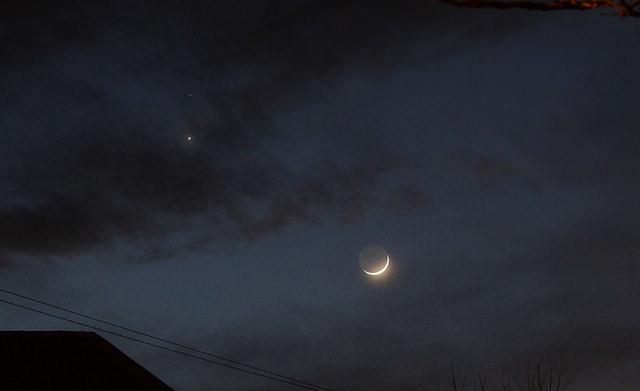One of nature’s grandest ‘occultations’ of all is coming right up this Friday, as the Moon passes in front of the Sun for viewers in the high Arctic for a total solar eclipse. And although 99.999+% percent of humanity will miss totality, everyone can trace the fascinating path of the Moon as it moves back into the evening sky this weekend.
As of this writing, it looks like the fickle March weather is going to keep us guessing right up to eclipse day. Fear not, as the good folks over at the Virtual Telescope Project promise to bring us views of the eclipse live. Not only does this eclipse fall on the same day as the start of astronomical spring in the northern hemisphere known as the vernal (northward) equinox, but it also marks the start of lunation 1141.
Ever try hunting for the slender crescent Moon in the dawn or dusk sky? The sport of thin Moon-spotting on the days surrounding the New Moon can push visual skills to the very limit. Binoculars are your friend in this endeavor, as you sweep back and forth attempting to see the slim fingernail of a Moon against the low contrast background sky. Thursday morning March 19th provides a great chance for North American observers to spy an extremely thin Moon about 24 hours prior to Friday’s eclipse.
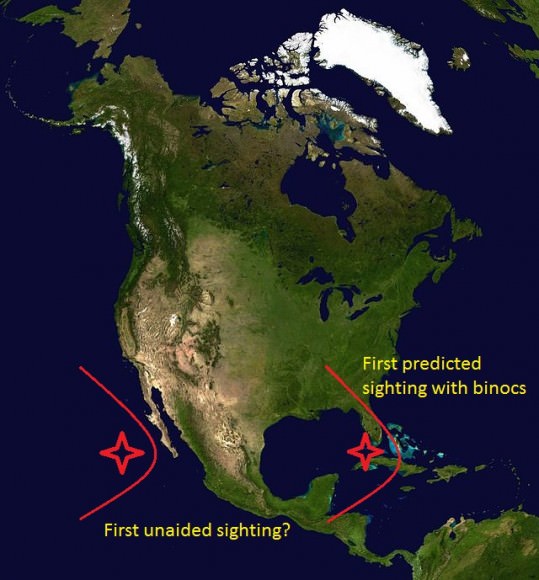
Unfortunately, most of North America misses the eclipse, though folks on the extreme east coast of Newfoundland might see a partially eclipsed sunrise if the day dawns clear.
The Moon will first be picked up in the evening sky post-eclipse this weekend. On Friday evening, folks in the southern United States might just be able to spy a 15 hour old Moon with optical assistance if skies are clear.
As the Moon fattens, expect to see it at its most photogenic as Ashen light or Earthshine illuminates its nighttime side. What you’re seeing is sunlight from the Earth being reflected back in a reverse (waning gibbous) phase as seen from the earthward side of the Moon. The prominence of Earthshine can vary depending on the amount of cloud and snow cover currently turned moonward, though of course, if it’s cloudy from your location, you won’t see a thing…
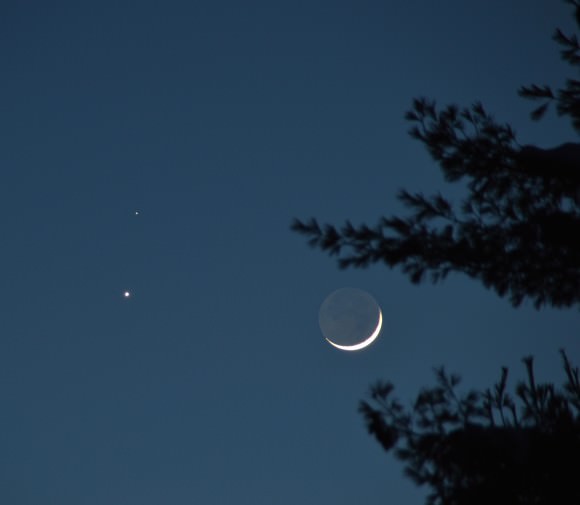
Watch that Moon over the coming weeks, as it has a date with destiny.
The Moon occults (passes in front of) two planets and one bright star in the coming week. First up is an occultation of Uranus on March 21st at around 11:00 UT/7:00 AM EDT. Sure, this one is for the most part purely academic and unobservable, as it occurs over central Africa in the daytime and is only 15 degrees east of the Sun. Still, if you can pick up the Moon on the evenings of March 20th or March 21st, you might just be able to spy nearby Uranus shining at +6th magnitude nearby before it heads towards solar conjunction on April 6th.
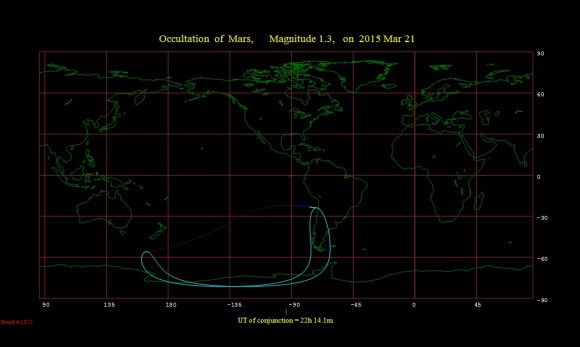
Next, the Moon occults Mars on March 21st at 22:00 UT/6:00 PM EDT for the southern Pacific coast of South America. North America will see an extremely close photogenic pairing of Luna and the Red Planet. This is one of seven occultations of a naked eye planet by the Moon for 2015, and the first of two for Mars for the year, the next falling on December 6th.
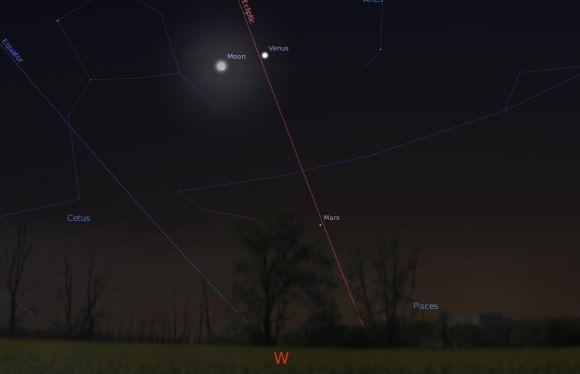
Next up, the Moon has a tryst with brilliant Venus, passing 2.8 degrees from the Cytherean world on March 22nd. Can you spy -4th magnitude Venus near the two day old Moon before sunset? This is the stuff that has inspired astronomically-themed flags and skewed emoticon ‘smiley face conjunctions’ of yore, including the close pairing of Mars, Venus and the Moon seen worldwide last month.
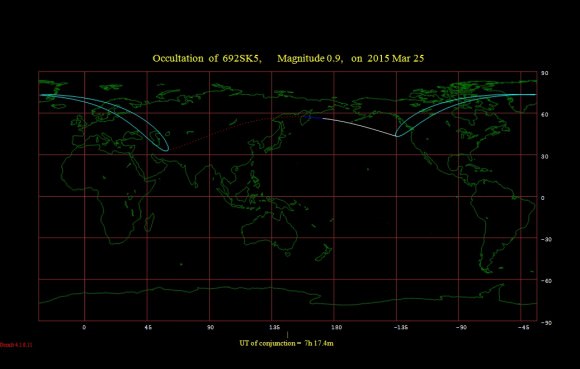
Next up, the 30% illuminated Moon occults the bright star Aldebaran for Alaskan viewers at dusk on March 25th. This is the third occultation of the star by the Moon in the ongoing cycle, and to date, no one has, to our knowledge, successfully caught an occultation of Aldebaran in 2015… could this streak be broken next week?
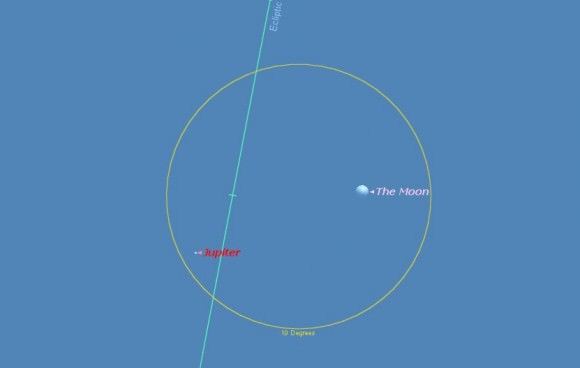
And speaking of daytime planet-spotting, Jupiter will sit only five degrees south of the waxing gibbous Moon on the evening of March 30th. Can you spy the giant planet near the daytime Moon in the afternoon sky using binocs? And finally, watch that Moon, as it heads for the third total lunar eclipse of the last 12 months visible from the Americas and the Pacific region on the morning of April 4th…
More to come!

